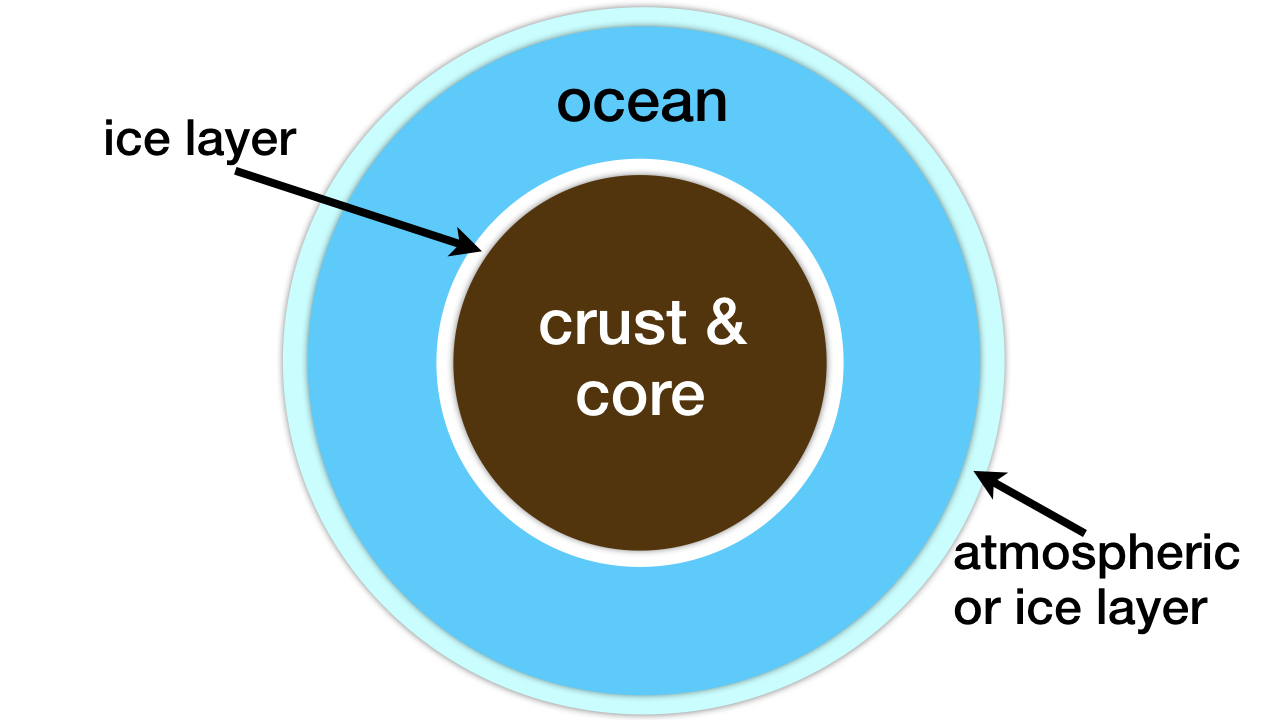What Percentage Of All The Earth's Water Is In A Form That Is Useable To Humans And Land Animals
Seventy-i per centum may seem like average, but when it comes to Earth's surface water pct, that number appears to be ideal for avant-garde civilisation. A scientific agency like NASA recognizes that life cannot exist without liquid h2o—thus, their long-held astrobiology mantra is to "follow the water."ane That pursuit leads astrobiology researchers to expect for testify of life or life's remains on astronomical bodies where there is at to the lowest degree a possibility of surface liquid h2o.
Withal, NASA's slogan is not helpful since h2o is the third well-nigh abundant molecule in the universe, right later on the 2 dissimilar forms of molecular hydrogen, H2 and H3. The universe is "soaking wet."
To add together to the difficulty, two Harvard University astronomers, Manasvi Lingam and Abraham Loeb, have published a paper wherein they explain how the location and quantity of liquid water on a planet's surface seriously constrain the possibility of life.2
Problem of Likewise Much Water Coverage
Where astronomers are able to measure the water content of Earth-like extrasolar planets, the vast majority possess water content far exceeding that of Globe, while the rest are bone dry. For the majority, the water fraction by weight ranges from viii per centum to 50 percentage.three Earth's water fraction is only 0.045–0.251 percent, of which just 0.02 percent is surface water.4
Any planet with a water fraction one percentage or greater, where at least some of the water is liquid, will exhibit these features: (1) they will have surfaces with deep oceans and no landmasses, or (ii) they will have deep subterranean oceans and exist completely covered in ice. Such worlds will lack continental landmass weathering. The lack of such weathering volition limit the availability of phosphates to the tiny amount generated by submarine weathering. This tiny amount might permit the being of a small biomass of prokaryote microbes but not the existence of animals.v
Any planet with a water fraction 5 percent or greater will possess an sea that is at to the lowest degree 100 kilometers deep. An ocean deeper than about a hundred kilometers will let no mineral weathering at all. At the bottom of such oceans, pressures will be extreme enough to produce tetragonal (crystal-forming) water ice. Tetragonal water ice has a density greater than that of liquid water.6 Thus, an ice layer will form at the ocean lesser that will create a permanent barrier between the liquid water and the minerals of the planet's interior (encounter figure 1). The oceans of such worlds volition lack the nutrient density to support life. They will also be acidic.vii

Figure i: H2o World Cantankerous Section
Planets with a deep surface or subterranean ocean will possess a tetragonal ice layer at the bounding main lesser that volition permanently separate its liquid water from its mineral interior. Such an body of water will lack the nutrient density to support life. D iagram credit: Hugh Ross
Problem of Too Little Water Coverage
Planets overwhelmingly dominated by surface landmasses will face a precipitation problem. The predominant source of precipitation onto land comes from the evaporation of ocean water and landmass precipitation is proportional to the surface surface area of a planet'southward oceans.
Another critical cistron for balanced atmospheric precipitation is that the larger the percentage of a planet's surface area that is covered by land, the more uneven is its landmass precipitation distribution. Where oceans cover less than 10 pct of a planet's area, very piddling precipitation falls on the landmasses. Most of the landmass area receives no precipitation at all. The thin strips of country that practise receive atmospheric precipitation are able to sustain only a tiny fraction of the net master biological productivity that would be typical of a present-twenty-four hours continent or island on Earth today.
Fine-Tuned H2o Coverage
For whatever kind of life to exist possible a planet must not be 100 percent or 0 per centum covered with water. Temporary microbial life can exist on a planet that is five–25 pct covered or fourscore–95 percent covered.
However, the long-term existence of plants and animals requires a planet that efficiently recycles nutrients. This necessity mandates that there must exist a rough balance between surface oceans and surface landmasses. For global high-technology human civilisation to be possible, a planet that is almost exactly the size of Earth is required. Today, on Globe the oceans embrace 71 per centum of the surface area and landmasses comprehend the remaining 29 pct. Less landmass coverage ways less space to accommodate a big population of humans, their animals, their farms, and their technology. More landmass coverage means less precipitation falling on the landmasses and less even distribution of that precipitation—with consequences for food crop production.
Since the origin of life 3.8 billion years ago, Earth's landmass coverage has been steadily increasing. Evidently, humans appeared on World at the optimal time for them to launch and sustain global civilization.
Then far, astronomers have only found worlds beyond Earth that are either 100 percent or 0 percent (surface) covered with water. That nosotros are 71 percent covered with water and 29 percent covered with landmasses appears to be no blow, simply rather a testimony of purposeful pattern.
Source: https://reasons.org/explore/blogs/todays-new-reason-to-believe/earth-s-surface-water-percentage-is-fine-tuned-for-life
Posted by: floressirche.blogspot.com

0 Response to "What Percentage Of All The Earth's Water Is In A Form That Is Useable To Humans And Land Animals"
Post a Comment